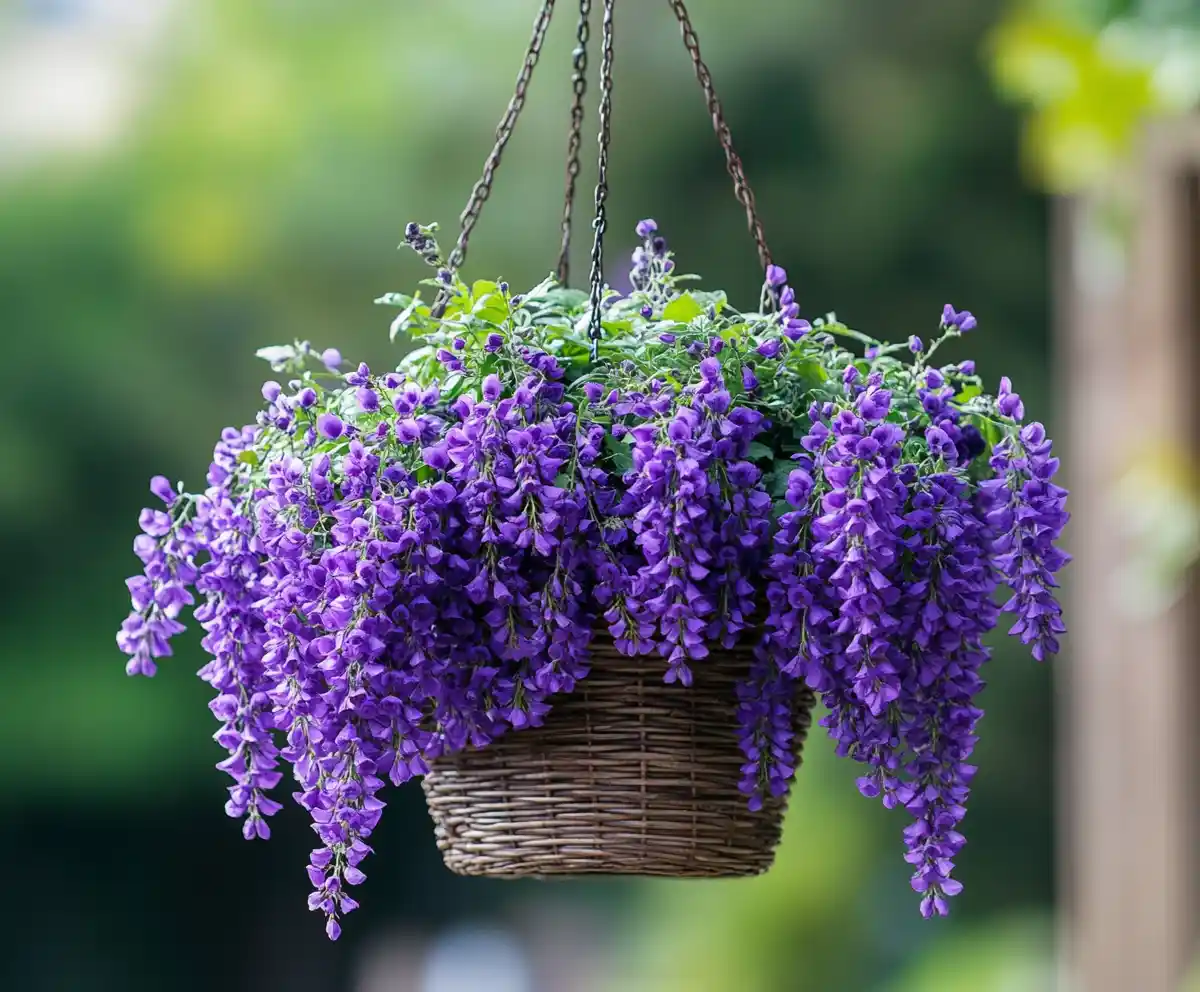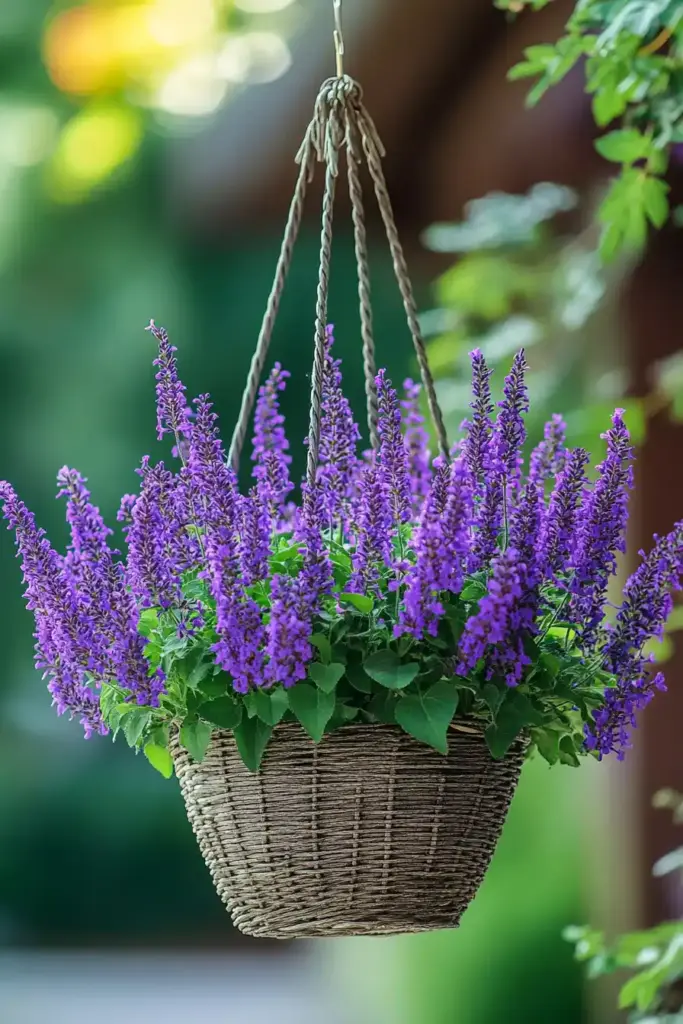Lavender isn’t just a plant — it’s a sensory experience that can transform any garden into a serene, fragrant paradise. With its vibrant hues and calming scent, lavender flower beds bring both beauty and purpose to outdoor spaces. Beyond their visual charm, these hardy plants attract bees, butterflies, and other friendly pollinators, making them a gardener’s best friend.
Whether you’re new to gardening or an experienced green thumb, there’s a lavender layout perfect for your space. From simple planter arrangements to elaborate garden borders, these ideas will help you create a stunning lavender showcase that suits your style and skill level.
Cascading Lavender Planters
Imagine stepping onto your patio or balcony and being greeted by a breathtaking cascade of lavender blooms. Hanging lavender planters are a simple yet dramatic way to bring this dream to life. By arranging pots at varying heights, you can create a beautiful waterfall effect that adds movement and charm to smaller outdoor spaces.
For the best results, choose compact lavender varieties like Lavandula angustifolia that thrive in containers. Ensure they bask in full sunlight and keep their shape neat with regular trimming. This layout not only maximizes space but also fills the air with a delightful fragrance every time you walk by.
Lavender and Stone Pathway
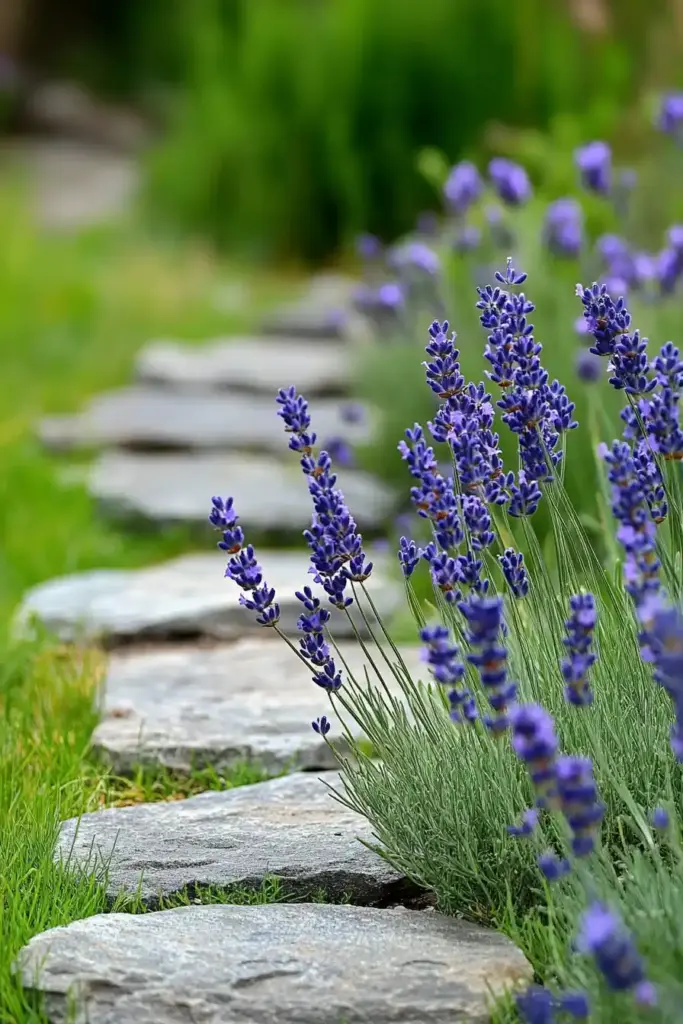
Create a magical journey through your garden by lining a stone pathway with lush lavender. This timeless design adds a storybook charm to any outdoor space, blending natural beauty with inviting scents. As you stroll along the path, the gentle brushing against lavender releases its soothing aroma, turning an everyday walk into a sensory delight.
Plant lavender in staggered rows or clusters along the edges of the path for a natural, flowing look. Make sure the area gets plenty of sunlight and has well-drained soil to keep the plants thriving. Whether your style is rustic or modern, a lavender-lined path offers effortless elegance that welcomes guests with open arms.
Mix of Lavender Varieties
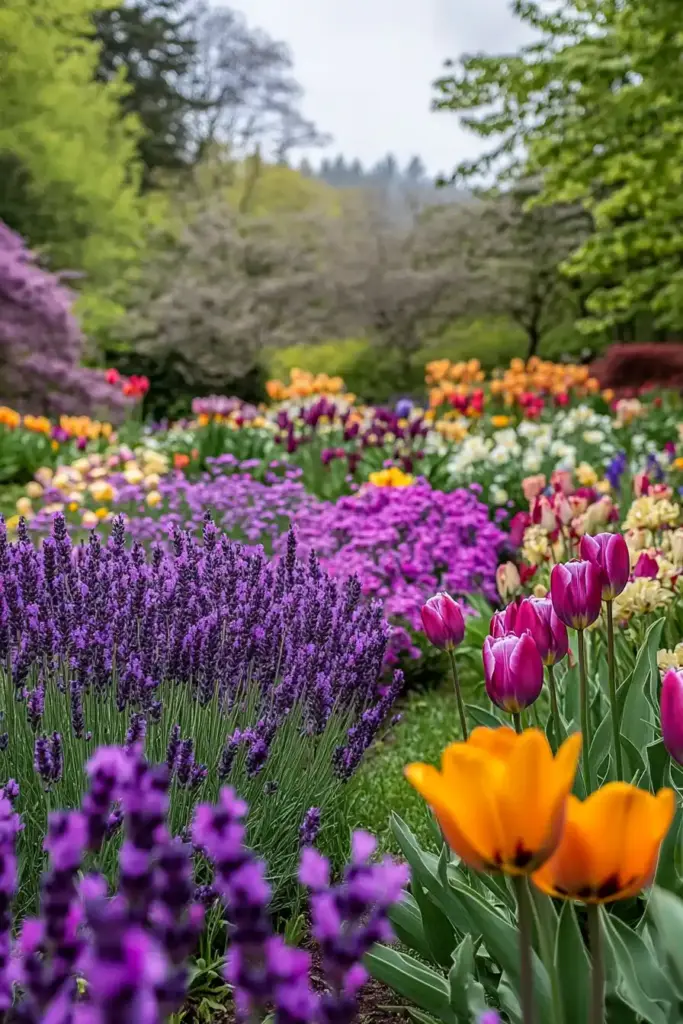
Why settle for just one type of lavender when you can enjoy a dazzling tapestry of colors, textures, and scents? Mixing different lavender varieties — like English, French, and Spanish types — adds rich visual interest and dynamic layering to your flower beds.
Varying the plant heights, flower shades, and blooming times ensures your garden stays lively and fragrant for longer periods. Plant taller varieties like Lavandula x intermedia toward the back and more compact types, such as Lavandula angustifolia, in the front to create depth and dimension. This approach not only looks stunning but also keeps your garden buzzing with pollinators all season long.
Rustic Wooden Raised Beds
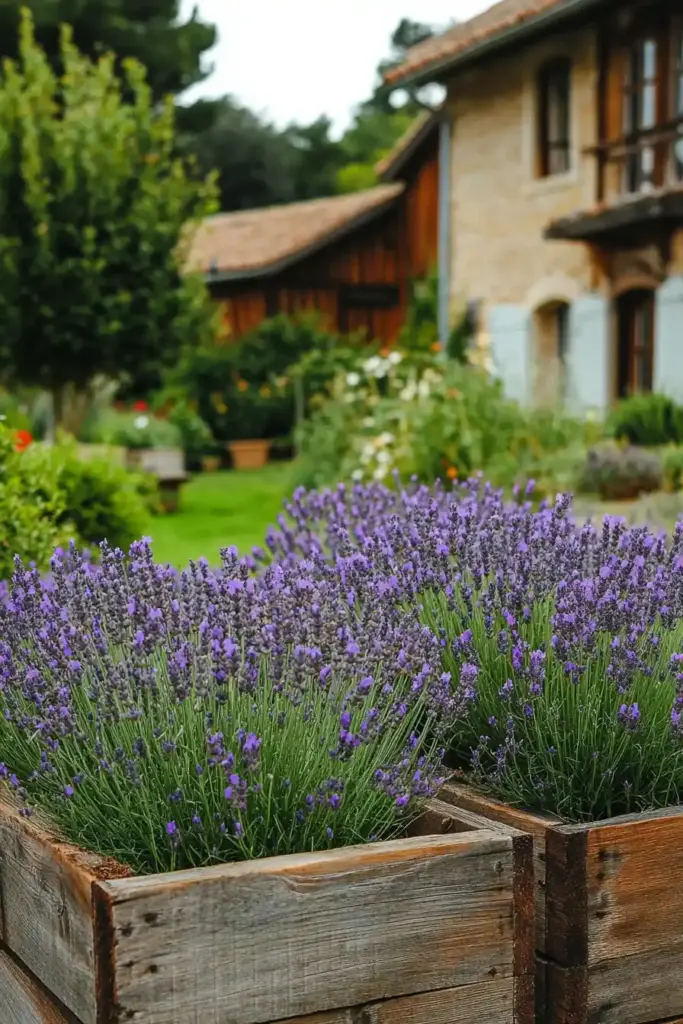
Give your lavender garden a charming, country feel by planting in rustic wooden raised beds. The natural texture of wood pairs beautifully with lavender’s soft, billowy blooms, creating a focal point that feels both warm and inviting. Raised beds also offer practical benefits like better drainage, improved soil control, and easier maintenance.
Opt for untreated, rot-resistant woods like cedar or redwood to ensure longevity without chemicals that could harm your plants. Position your raised beds in a sunny spot and fill them with sandy, well-drained soil to keep your lavender happy and thriving. Whether you’re creating a centerpiece for a backyard garden or lining a walkway, rustic wooden beds are a stylish and functional choice.
Symmetrical Lavender Borders
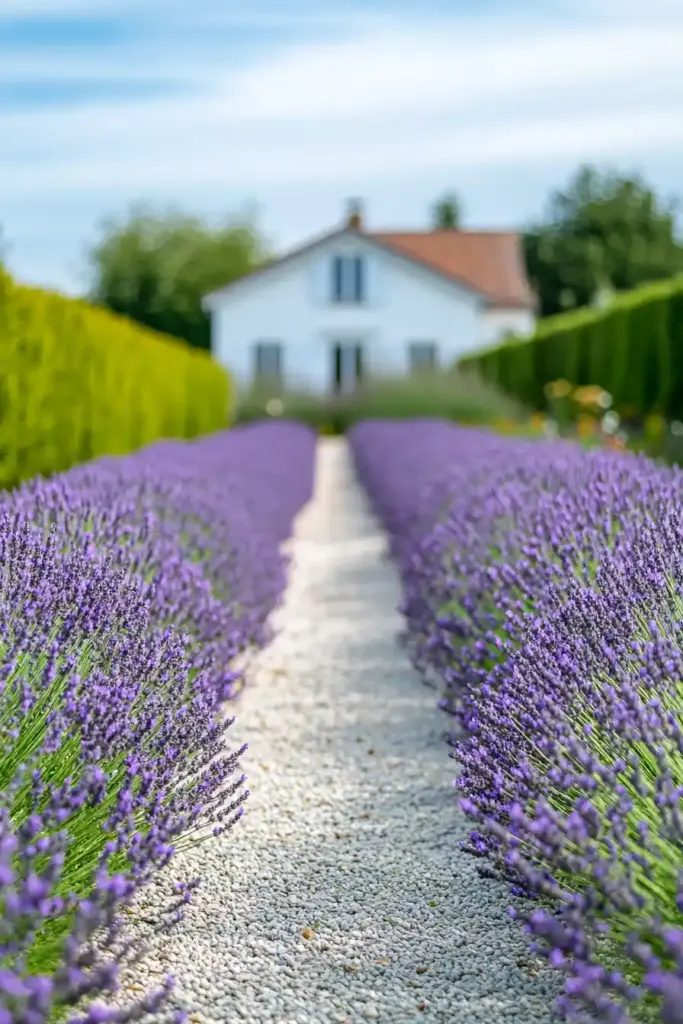
For a classic and peaceful garden design, symmetrical lavender borders are a stunning choice. By planting rows of lavender on either side of a walkway, driveway, or garden path, you create a sense of balance and order that’s both elegant and calming.
Choose a uniform lavender variety to maintain a cohesive look, and space your plants evenly to achieve that crisp, structured effect. Regular pruning will help keep the borders neat and encourage dense, lush growth. This layout works beautifully in both formal gardens and more relaxed country settings, offering timeless beauty with minimal upkeep.
Lavender Interspersed with Herbs
Blend beauty and function by mixing lavender with a variety of culinary herbs like rosemary, thyme, and sage. This combination not only looks stunning but also creates a multi-sensory garden experience with delightful scents, textures, and flavors.
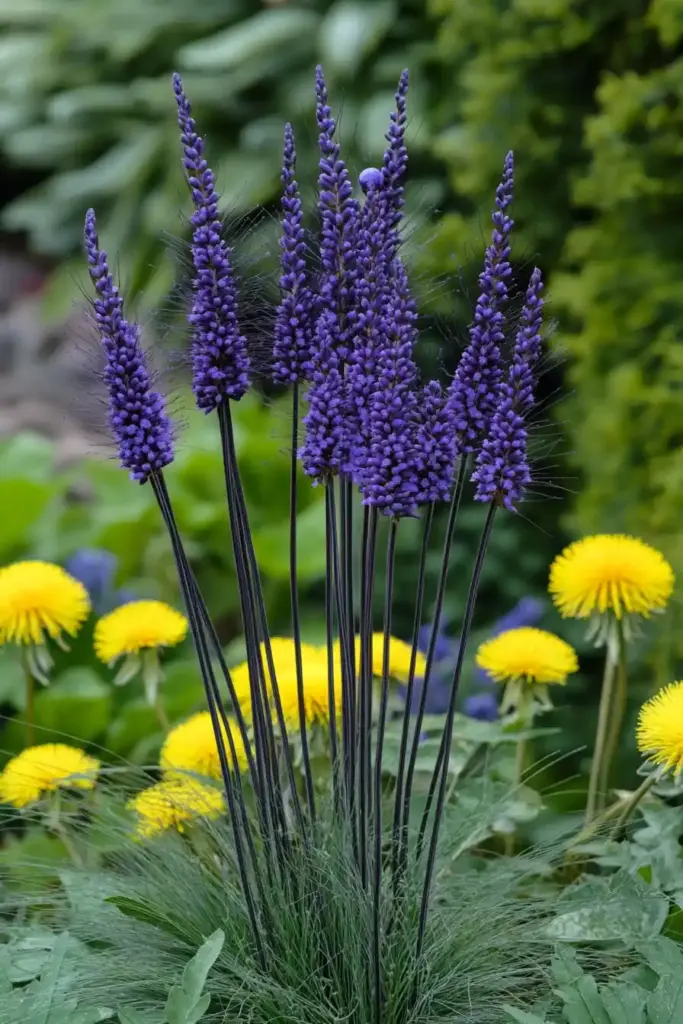
Lavender’s soft purple blooms contrast beautifully with the rich greens and varied shapes of herb foliage. Plus, planting herbs and lavender together supports a healthy ecosystem, attracting pollinators and beneficial insects to your garden. Choose a sunny, well-drained spot, and group plants with similar watering needs to keep maintenance simple. This charming mix is perfect for kitchen gardens, patio containers, or even small backyard spaces.
Vertical Lavender Wall
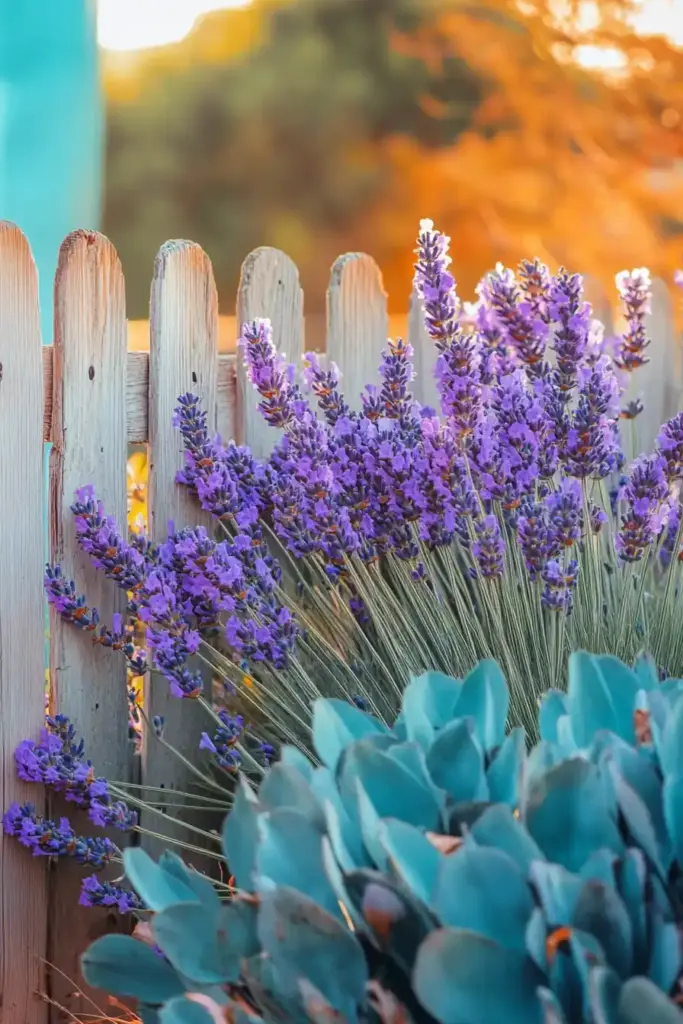
Take your lavender garden to new heights — literally — with a stunning vertical lavender wall. Using trellises, vertical planters, or specially designed wall frames, you can create a living tapestry of fragrant blooms that saves space while making a bold design statement.
Choose compact lavender varieties that adapt well to vertical growth and ensure the structure is placed in a sunny, sheltered spot. Regular pruning will help maintain the shape and encourage dense flowering. A vertical lavender wall is not only a conversation starter but also a clever way to infuse patios, balconies, or small gardens with the beauty and aroma of lavender.
Formal Lavender Hedge
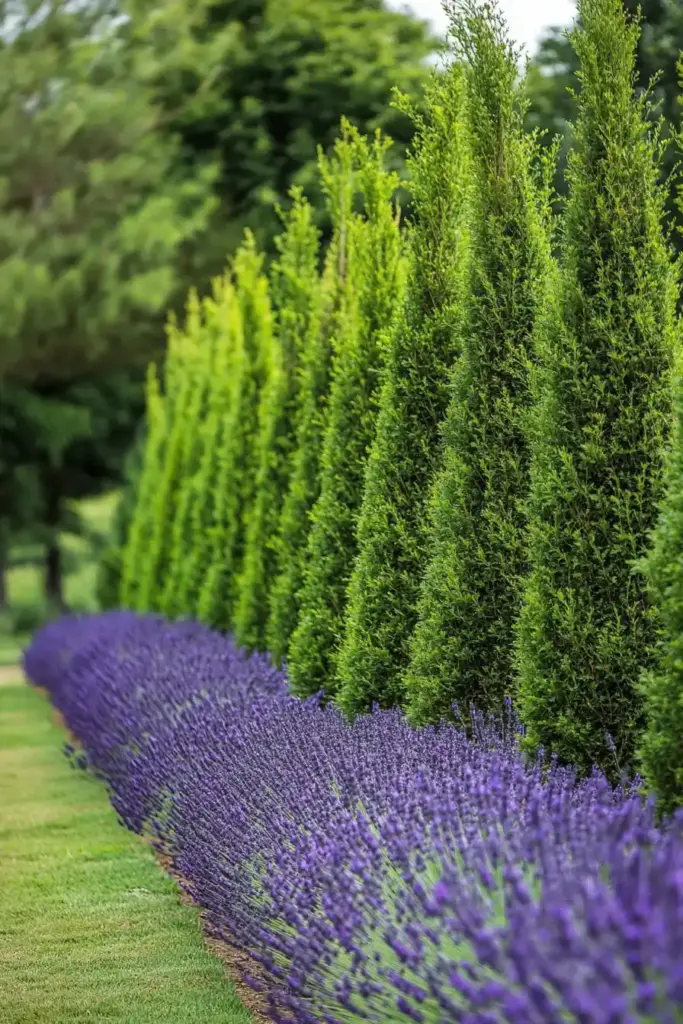
For a touch of refined elegance, consider planting a formal lavender hedge. With its neat lines and uniform appearance, a lavender hedge can beautifully frame garden beds, walkways, or property borders while offering year-round structure and seasonal bursts of color and fragrance.
To achieve a polished look, choose a compact, dense-growing variety like Lavandula angustifolia and space plants closely together. Regular pruning after blooming is essential to maintain crisp edges and promote bushier growth. A formal lavender hedge not only enhances curb appeal but also creates a calming, fragrant boundary that fits effortlessly into both classic and modern garden designs.
Lavender Edging around Vegetable Garden
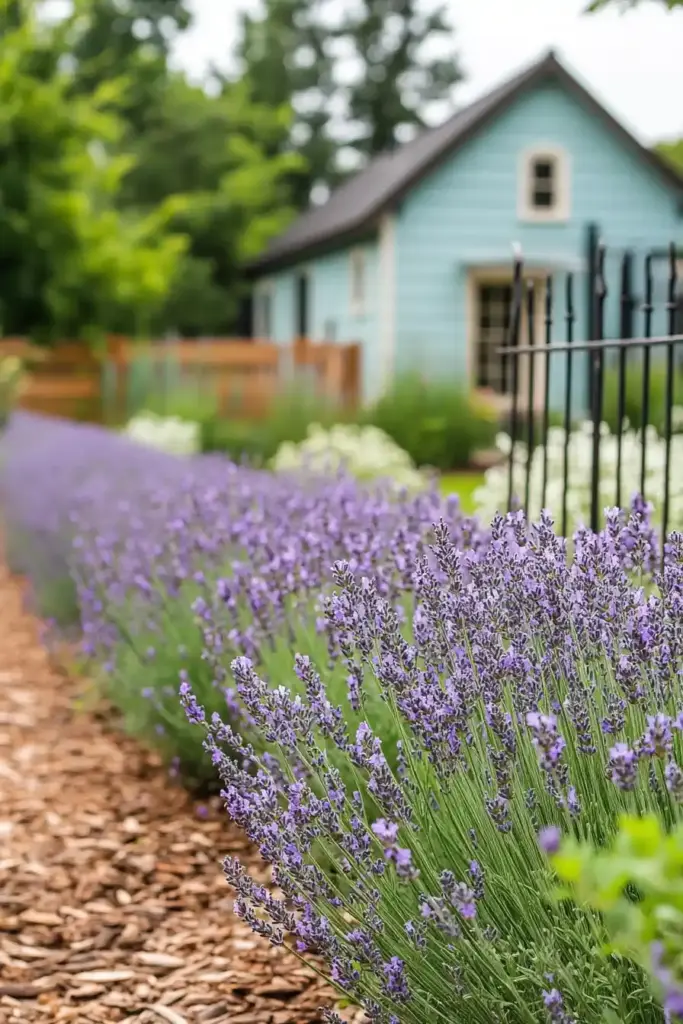
Frame your vegetable beds with lavender to combine beauty, functionality, and ecological benefits all in one. The striking purple blooms create a natural, decorative border that defines your growing spaces while helping to repel common garden pests and attract essential pollinators like bees and butterflies.
Plant lavender along the perimeter of your vegetable garden, leaving enough space for airflow and maintenance. Opt for varieties that stay relatively compact to avoid overshadowing your crops. Not only does this setup enhance the garden’s visual appeal, but it also supports healthier vegetable growth by encouraging a balanced, thriving ecosystem.
Lavender and Wildflower Mix
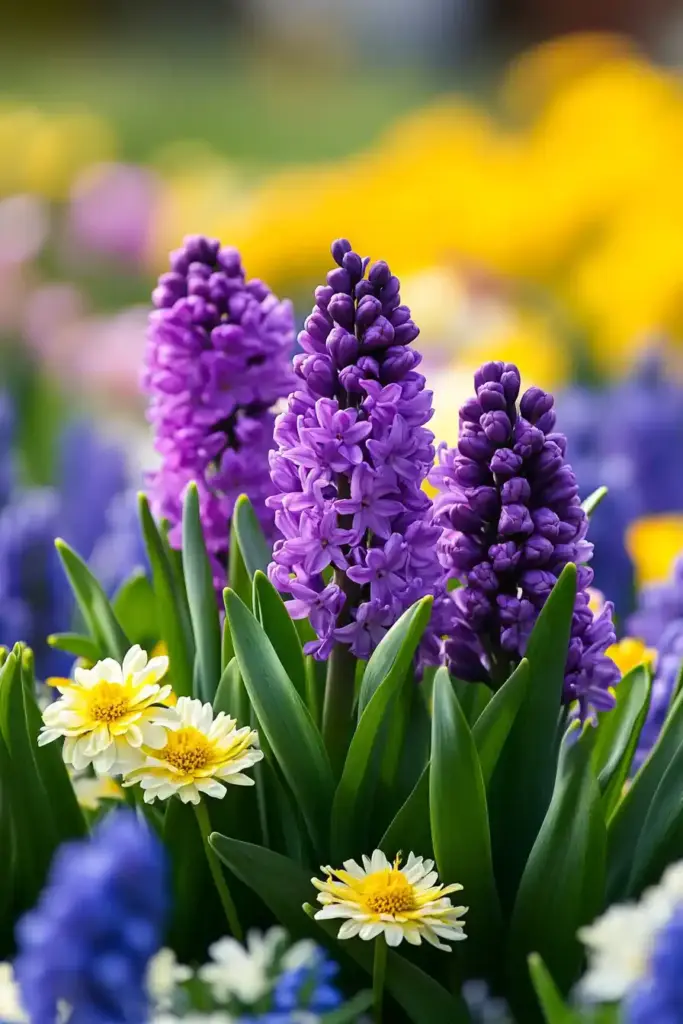
If you love a vibrant, free-spirited garden, mixing lavender with wildflowers is a dream come true. The soft, soothing purples of lavender pair beautifully with the lively colors of daisies, poppies, and cornflowers, creating a meadow-like scene that’s both breathtaking and low-maintenance.
Scatter seeds or plant clusters of wildflowers around established lavender plants to achieve a natural, flowing look. This mix not only provides stunning visual variety but also serves as a paradise for pollinators, ensuring your garden buzzes with life all season long. Choose drought-tolerant varieties for an easy-care, eco-friendly display that thrives in full sun.
Frequently Asked Questions (FAQ)
1. What is the best type of lavender for flower beds?
The best types of lavender for flower beds are English lavender (Lavandula angustifolia) and hybrid lavenders (Lavandula x intermedia). They are hardy, beautifully fragrant, and have a compact growth habit, making them ideal for borders, raised beds, and mixed gardens.
2. How much sunlight does lavender need?
Lavender loves the sun! Aim for at least 6 to 8 hours of direct sunlight per day. Full sun helps lavender produce more blooms and keeps the plants healthy and vibrant.
3. How often should I water lavender?
Lavender prefers slightly dry conditions. Water deeply but infrequently — typically once every one to two weeks — allowing the soil to dry out between waterings. Overwatering can cause root rot, so well-drained soil is essential.
4. Can I grow lavender in containers?
Absolutely! Lavender grows beautifully in containers, especially when using compact varieties. Make sure to use a pot with drainage holes, sandy soil, and place it in a sunny spot. Regular pruning keeps potted lavender neat and thriving.
5. When is the best time to plant lavender?
Spring or early fall is the best time to plant lavender. Planting during these cooler seasons gives the roots time to establish before facing extreme heat or winter frost.
6. Does lavender attract pollinators?
Yes! Lavender is a magnet for bees, butterflies, and other beneficial insects. Adding lavender to your garden not only boosts its beauty but also supports local ecosystems.
Conclusion
Designing a lavender flower bed is a rewarding way to add color, fragrance, and life to your outdoor space. Whether you prefer structured hedges, whimsical wildflower mixes, or creative vertical gardens, there’s a lavender layout to match every style and skill level. By combining beauty with functionality, these ideas not only elevate your garden’s charm but also support local pollinators and create a peaceful retreat right in your backyard.
Start with one of these inspirations and watch your garden transform into a soothing, aromatic haven you’ll love year-round!

